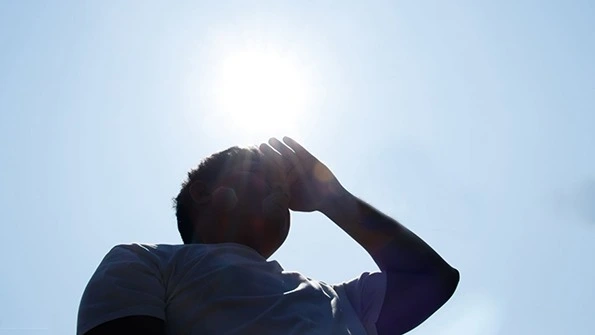
Heat Stroke: Symptoms, Causes and Preventions
Let’s talk about something that can make you want to park yourself in front of the nearest AC unit – heat stroke. As temperatures rise each summer, this dangerous heat-related illness becomes a scary reality we can’t ignore. Heat stroke is the most severe type of heat injury, where the body’s cooling systems completely fail under intense heat and humidity. This overheating epidemic puts thousands in the emergency room annually and can even prove fatal if not properly treated.
But, instead of causing panic, we all should understand what exactly it is, who is more at risk, how to identify the warning signs, and most importantly – how to prevent it. A little prevention goes a long way!
Table of Contents
ToggleWhat Is Heat Stroke?
Heat stroke occurs when the body’s internal temperature rises alarmingly high – typically above 103°F. This extreme overheating happens when internal cooling systems shut down and cannot regulate body temperature through sweating or other mechanisms.
Left unchecked, those rising temperatures overheat the brain and can lead to life-threatening complications like organ failure, brain damage, and cardiac arrest. This condition is classified as a genuine medical emergency requiring immediate intervention to avoid lasting bodily damage or even death.
What Causes Heat Stroke?
There are two primary pathways through which heat stroke rears its scorching head: exertion and environmental exposure.
- Exertional heat stroke stems from pushing the body too hard through strenuous physical activity in hot weather conditions. Vigorous exercise causes the body’s heat production to outpace its ability to cool itself, leading to a rapid temperature spike. This is a well-known occupational hazard for endurance athletes, military personnel, laborers, and the active elderly.
- Environmental heat stroke occurs through extended exposure to exceptionally high temperatures and humidity levels, often without acclimatization. Infants, the elderly, those with cardiovascular issues, and outdoor workers face greater vulnerability here. But anyone stuck in a hot car, home without AC, or performing low-intensity activities for too long in the heat can also succumb.
While different inciting incidents, both situations create the perfect sizzling storm for the body to overheat and malfunction in hazardous ways.
Symptoms of Heat Stroke
Now when it comes to heat stroke, recognizing those flaming red warning signs early is absolutely pivotal for prevention or receiving immediate treatment. Some blazing indicators of trouble include:
- Throbbing headache, dizziness and nausea
- Sizzling skin that’s hot, flushed and dry (no sweating)
- Hallucinations, confusion, and bizarre behaviour
- Rapid pulse, shallow breathing, and chest pains
- Potential seizures, loss of consciousness, or coma
This sizzling sickness can escalate with mind-blowing swiftness, bringing someone from feeling merely flushed and fatigued to an altered mental state incredibly rapidly. If you are experiencing any of the above symptoms, schedule an appointment with Dr. Reshma Singh, who is one of the Best General Physician in Mohali.

Who's Most At-Risk of Catching These Symptoms?
While excessive heat is certainly no summer picnic for anyone, certain individuals do face higher vulnerabilities for succumbing to heat stroke based on:
- Age – Infants, young children, and the elderly struggle more with regulating body heat properly.
- Fitness & Health – Those unaccustomed to hot conditions, who are obese, ill, dehydrated, or taking certain meds are more prone to overheating.
- Environment – People confined to unventilated spaces, outdoor workers, hikers, and the homeless face prolonged exposure risks.
- Lack of Acclimatization – Quickly shifting from cooler to hot conditions without building up heat tolerance first creates bodily shocks.
Generally, the very young, very old, and those with chronic health conditions are most in danger of progressing from heat exhaustion or cramps to full heat stroke. Of course, no one is immune to these scorching symptoms when conditions become extreme enough.
Prevention Tips
Alright, now for the million-dollar question – how can you best safeguard yourself and your loved ones against the scourge of heat stroke? Well, the top prevention methods involve:
- Stay Hydrated – Making a conscious effort to drink water regularly, and avoiding caffeinated or alcoholic beverages that promote dehydration.
- Seek AC Refuges – Finding properly air-conditioned buildings or shady spots to regularly cool down, especially during peak afternoon heat.
- Dress Right – Opt for lightweight, loose, and light-colored clothing to deflect heat and allow sweat evaporation.
- Monitor Exertion – Ramping up physical activities slowly and taking regular breaks to avoid overtaxing the body’s cooling abilities.
- Watch the Vulnerable – Keeping vigilant eyes on young kids, elderly relatives, obese individuals, or pets who may struggle more in hot conditions.
- Be Weather-Aware – Paying mind to local heat advisories, air quality issues, and rescheduling strenuous activities during the absolute hottest points possible.
If you know someone exhibiting heat stroke symptoms, don’t delay! Get them indoors immediately, call emergency services, and begin carefully cooling them down with cool compresses or tub immersion. These scorching temperatures are truly nothing to underestimate. An ounce of prevention and vigilant heat awareness today could save lives tomorrow.
Conclusion
By simply taking a few common sense precautions like staying hydrated, checking the weather, dressing appropriately, and limiting vigorous activity during intense heat spells – we can all avoid becoming feverishly overheated statistics. Our bodies are incredible environmental regulators, but a little defensive assistance goes a long way sometimes.
So be smart about integrating simple heat stroke prevention habits this summer and every summer going forward, okay? An ounce of heat prep is truly worth a pound of miserable heat stroke recovery.
FAQs
Q1. What is a heat stroke?
Ans. Heat stroke occurs when the body’s internal temperature rises alarmingly high, typically above 103°F, causing the body’s cooling systems to fail completely. This extreme overheating can lead to life-threatening complications like organ failure, brain damage, and cardiac arrest.
Q2. What are the two main causes of heat stroke?
Ans. The two primary causes of heat stroke are exertional heat stroke (from strenuous physical activity in hot weather) and environmental heat stroke (from prolonged exposure to high temperatures and humidity).
Q3. What are the symptoms of heat stroke?
Ans. Common symptoms include throbbing headache, dizziness, nausea, hot and flushed dry skin, hallucinations, confusion, rapid pulse, shallow breathing, chest pains, seizures, and potential loss of consciousness or coma.
Q4. Who is at higher risk of heat stroke?
Ans. Those at higher risk include infants, young children, the elderly, individuals unaccustomed to hot conditions, those with obesity or chronic illnesses, outdoor workers, and people lacking acclimatization to heat.
Q5. How can heat stroke be prevented?
Ans. Prevention tips include staying hydrated, seeking air-conditioned refuges, wearing lightweight and light-colored clothing, monitoring exertion levels, watching vulnerable individuals closely, and being aware of weather advisories.
